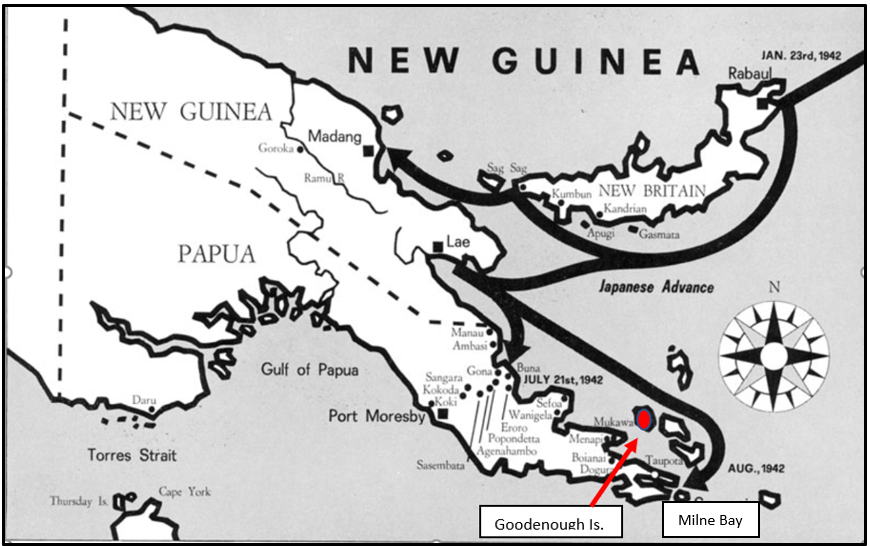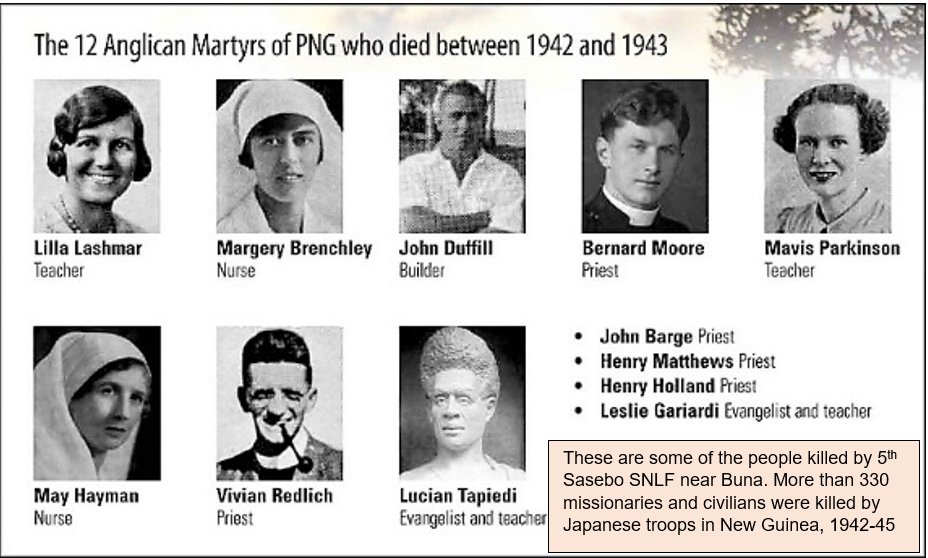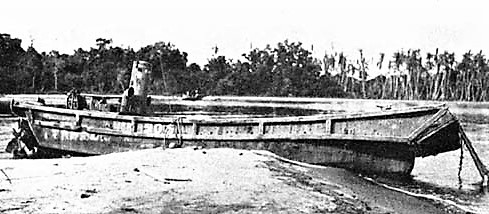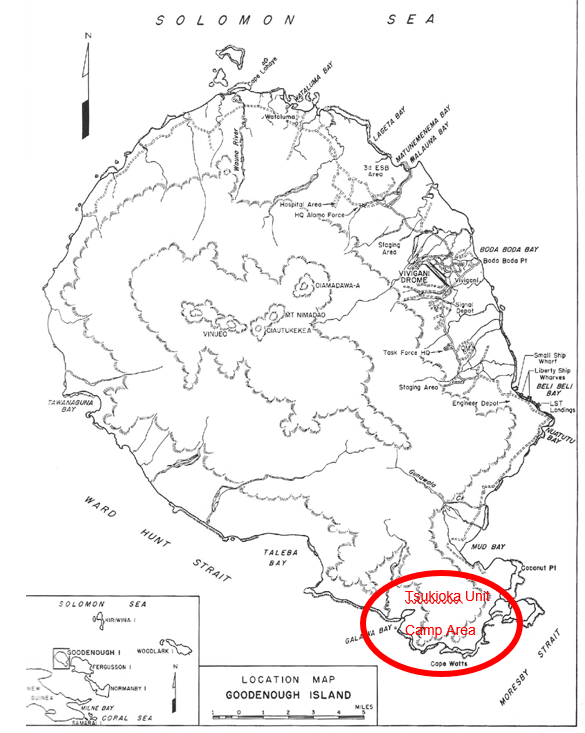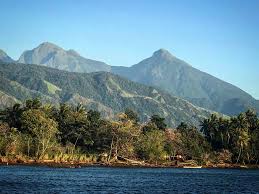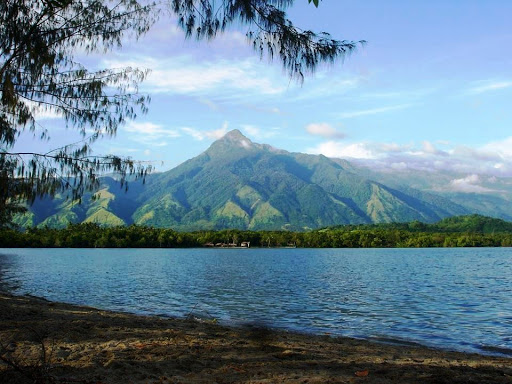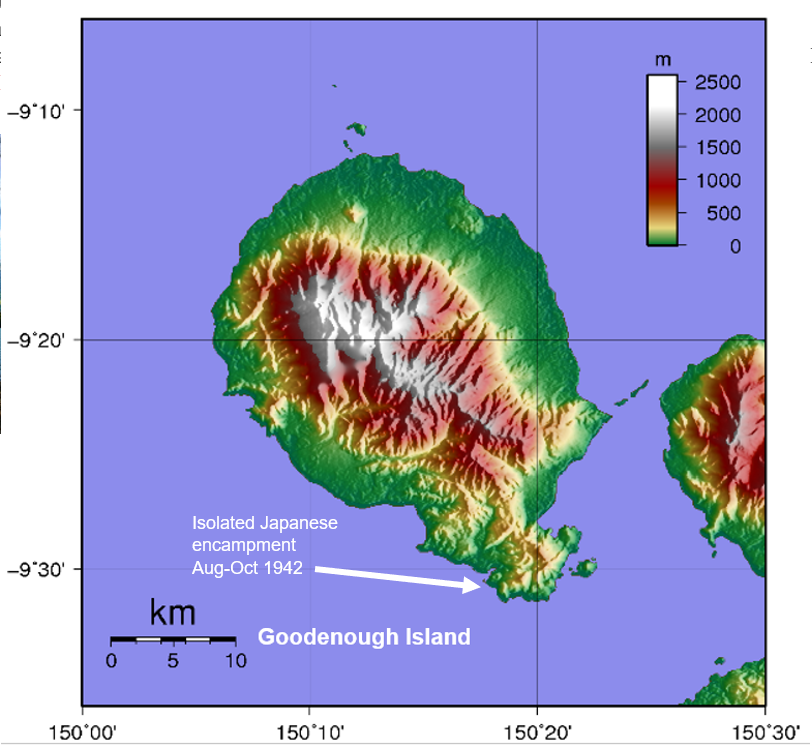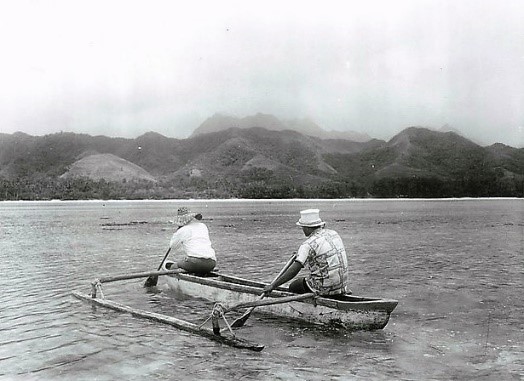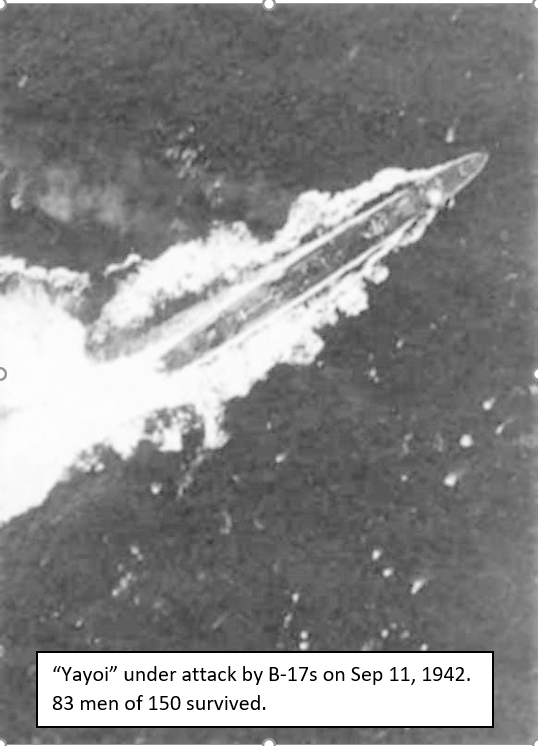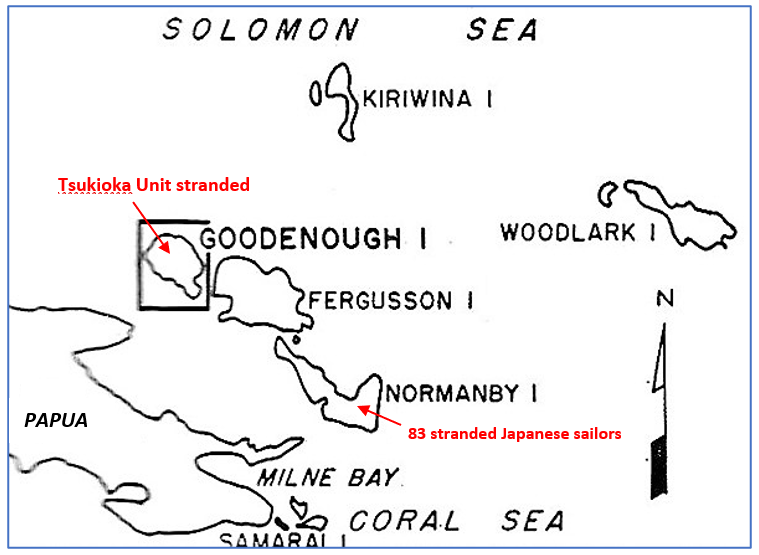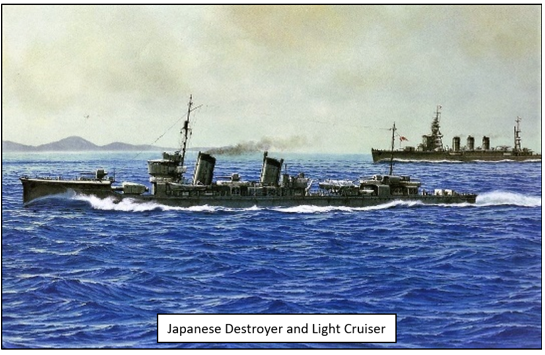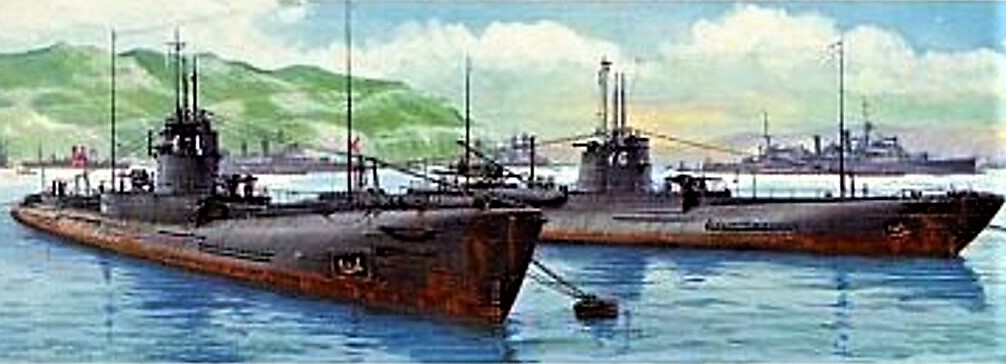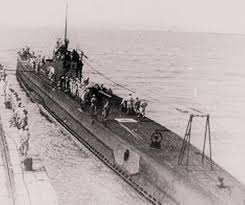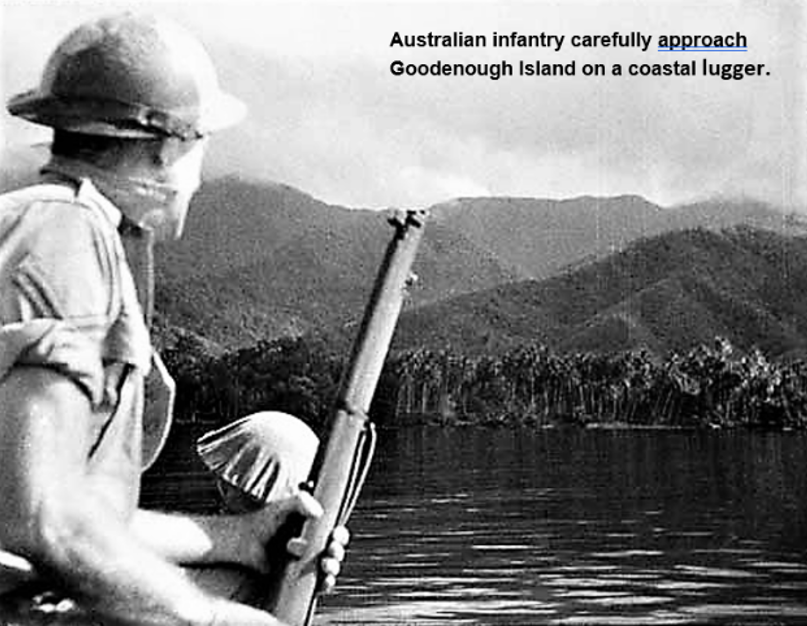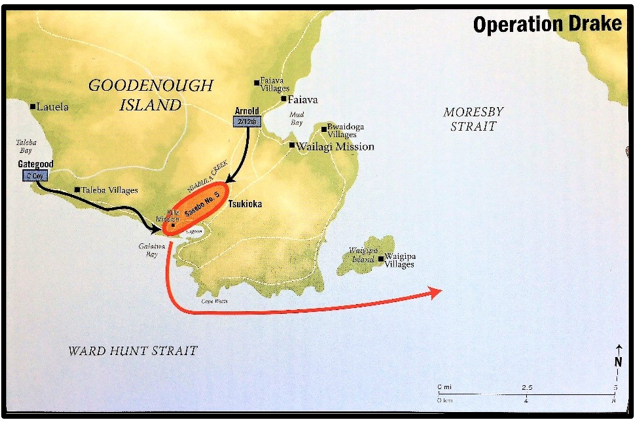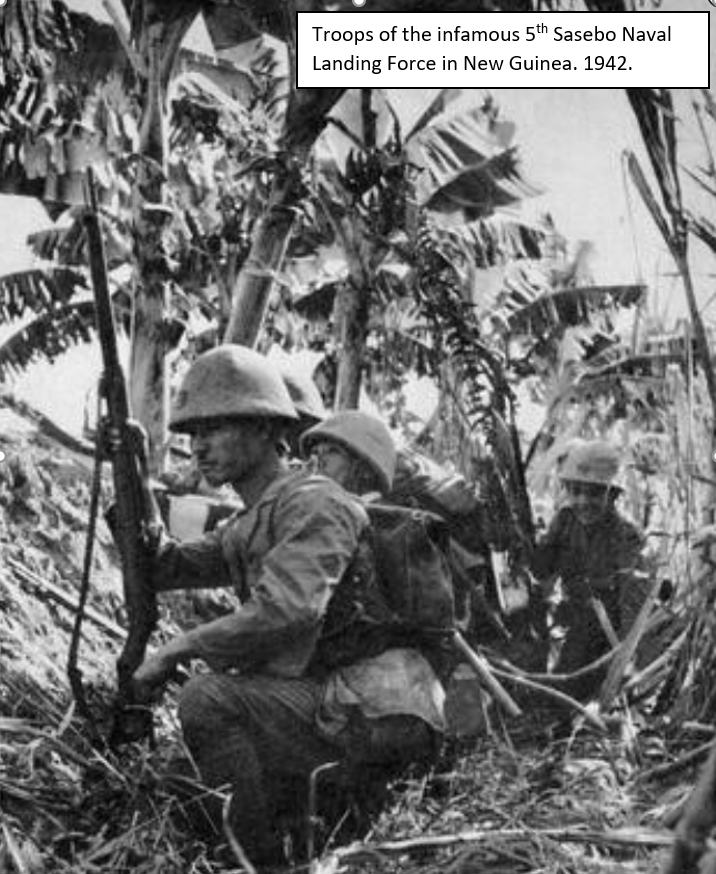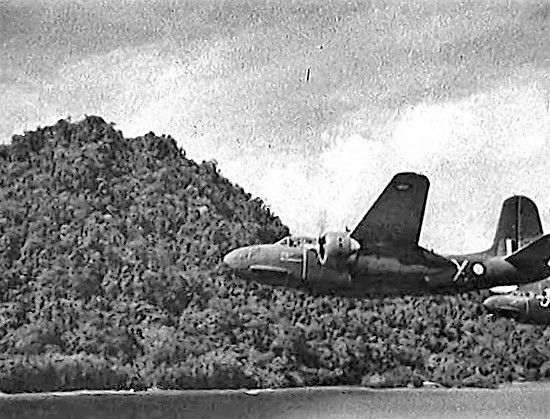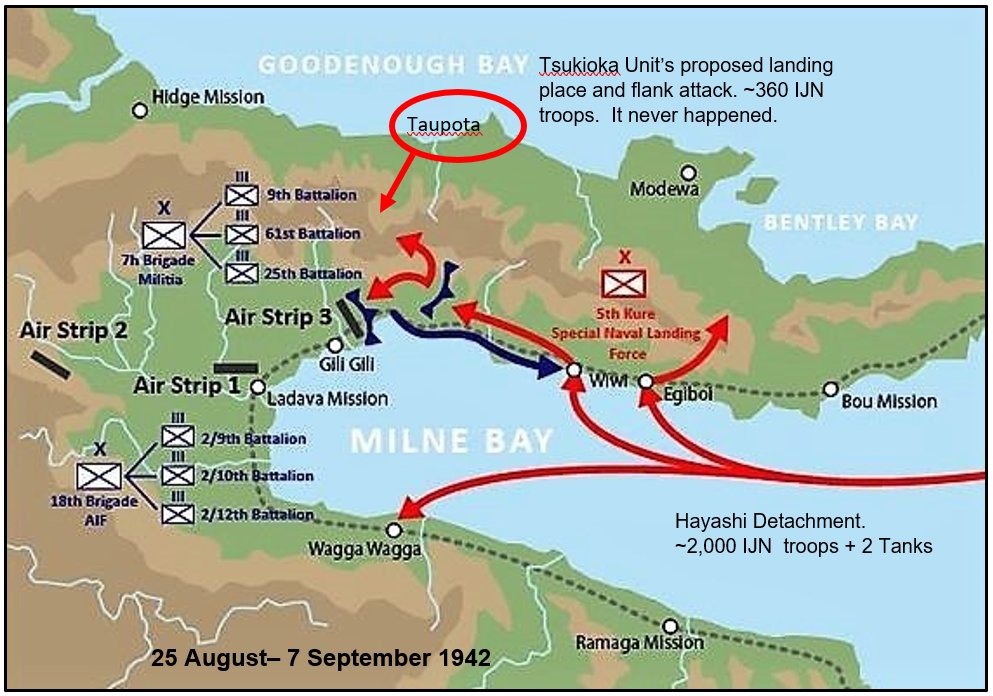Thread 1/19
THE LOST UNIT:
To support the Japanese Naval landings #MilneBay in August 1942, the Tsukioka Unit (353 men of the 5th Sasebo Special Naval Landing Force, plus others) were ordered east from Buna, packed onto 7 barges. The voyage was perilous, many men seasick.
THE LOST UNIT:
To support the Japanese Naval landings #MilneBay in August 1942, the Tsukioka Unit (353 men of the 5th Sasebo Special Naval Landing Force, plus others) were ordered east from Buna, packed onto 7 barges. The voyage was perilous, many men seasick.
The Tsukioka Unit was responsible for the earlier massacre of the population of Buna village, and of several fleeing Australian, English & Papuan missionaries & civilians who’d been mistreated and turned in by local villagers. All were beheaded. The last victim was a 6 y.o. boy.
25 Aug 1942: After 250km on choppy seas Tsukioka ordered an unscheduled stop at Goodenough Island. The beached barges were spotted & destroyed by 12 Kittyhawks (75 Sqn, RAAF) – along with the unit’s radio transmitter and all provisions. The Tsukioka Unit was now marooned.
The mountainous island (named after RN Commodore J. G. Goodenough in 1873) is 105 km by sea from Milne Bay and 298 km from Port Moresby. Its position near the coastal sea routes between Milne Bay - Buna - Rabaul - Guadalcanal made it strategically very important in 1942-1943.
Goodenough Island (GI) is oval shaped, measuring 34 km long, 21 km across. The coastal belt is a few km wide. It’s very rugged, w/grasslands, many streams & coastal swamps.
1942: No roads. No airstrip. No towns. Few people.
It rises steeply, w/several mts, esp. Mt Vineuo 2,536 m.
1942: No roads. No airstrip. No towns. Few people.
It rises steeply, w/several mts, esp. Mt Vineuo 2,536 m.
A very small detachment of an American fighter control squadron was on GI’s east coast. They provided advance warning to the Australian fighter planes based at nearby Milne Bay.
They quickly evacuated when Tsukioka’s 360 men made camp at Kilia Bay, on the southern tip of GI.
They quickly evacuated when Tsukioka’s 360 men made camp at Kilia Bay, on the southern tip of GI.
Sept 1: The Japanese castaways managed to find a few canoes and sent teams of messengers paddling the 250km back to Buna.
Sept 9: One man did reach Buna and collapsed, having survived only on coconut milk for 8 days. The Tsukioka Unit had been missing for 17 days; no contact.
Sept 9: One man did reach Buna and collapsed, having survived only on coconut milk for 8 days. The Tsukioka Unit had been missing for 17 days; no contact.
Destroyers Yayoi & Isokaze went to rescue the Unit. US bombers intercepted them off New Britain. Yayoi hit; sank as night fell. Isokaze evaded the bombers and searched for hours; nothing. No sign of Yayoi’s crew. Now two groups were stranded in the Solomon Sea, one unlocated.
12 Sep: A message dropped to the Unit, with food, advised that rescue was postponed. Now they knew they’d been located.
22 Sep: Two warships found 10 Yayoi survivors drifting at sea. Hearing that 87 more had drifted to Normanby Island, they rushed there that night. Found nothing.
22 Sep: Two warships found 10 Yayoi survivors drifting at sea. Hearing that 87 more had drifted to Normanby Island, they rushed there that night. Found nothing.
22 Sep (same day): C Coy, 2/10th Bn landed on Normanby, searched, and found only 8 sick Japanese. Dozens of other sailors were hiding in thick jungle.
That night, destroyers Mochikuzi & Isokaze appeared offshore with searchlights & sirens.
Now the Australian infantry were hiding
That night, destroyers Mochikuzi & Isokaze appeared offshore with searchlights & sirens.
Now the Australian infantry were hiding
23 Sep: The 2/10th returned to the Allied base at Milne Bay on HMAS Stuart.
More Japanese supplies were airdropped on GI and in passing over the Normanby Island hinterland an IJN plane spotted the Yayoi sailors.
26 Sep: Most of the Japanese on Normanby now taken off by submarine.
More Japanese supplies were airdropped on GI and in passing over the Normanby Island hinterland an IJN plane spotted the Yayoi sailors.
26 Sep: Most of the Japanese on Normanby now taken off by submarine.
The Allies, aware of a Japanese presence on GI, blocked all rescue attempts.
Rations were low, malaria was high.
3 Oct: The large Cruiser Sub I-1 arrived with a Daihatsu barge on deck, w/crew, food, m/guns & ammo. She embarked 71 diseased men & the cremated remains of 13 others.
Rations were low, malaria was high.
3 Oct: The large Cruiser Sub I-1 arrived with a Daihatsu barge on deck, w/crew, food, m/guns & ammo. She embarked 71 diseased men & the cremated remains of 13 others.
13 Oct: Another rescue mission left a 2nd barge.
15 Oct: Tsukioka Unit’s new radio informed the 285 Japanese that rescue was delayed. They must hide the barges.
Trouble was brewing.
The Allies’ intelligence said the Japanese were weak, so Operation Drake was about to be launched.
15 Oct: Tsukioka Unit’s new radio informed the 285 Japanese that rescue was delayed. They must hide the barges.
Trouble was brewing.
The Allies’ intelligence said the Japanese were weak, so Operation Drake was about to be launched.
22 Oct: Operation Drake the first Australian amphibious assault since Gallipoli.
630 men of 2/12 Bn landed at night on 2 flanks & moved towards Kilia to trap the enemy in a classic pincer tactic.
Heavy rain began, the terrain steep and wet. “..like trying to walk up a waterfall.”
630 men of 2/12 Bn landed at night on 2 flanks & moved towards Kilia to trap the enemy in a classic pincer tactic.
Heavy rain began, the terrain steep and wet. “..like trying to walk up a waterfall.”
“The worst march we’d endured in the war.”
The 2/12 veterans of Tobruk & Milne Bay, after 10 hrs’ struggling, were ambushed en route from well dug-in, mutually-supporting firing positions.
The very popular Sgt M O’Sullivan, mortally wounded, lay groaning in pain.
Morale dropped.
The 2/12 veterans of Tobruk & Milne Bay, after 10 hrs’ struggling, were ambushed en route from well dug-in, mutually-supporting firing positions.
The very popular Sgt M O’Sullivan, mortally wounded, lay groaning in pain.
Morale dropped.
The Japanese, well fed, dug-in & ready, used heavy sniper fire and grenades from cover as the 2/12 climbed forward.
A 2/12 mortar crew was ambushed, retreated, abandoning most of its ammunition.
The west flank attack also thwarted. Low cloud=no air support.
Australians withdrew.
A 2/12 mortar crew was ambushed, retreated, abandoning most of its ammunition.
The west flank attack also thwarted. Low cloud=no air support.
Australians withdrew.
The 2/12th tried other flanks, but both the jungle and the gunfire was thick.
AAF strafing was asked for the next a.m., but it didn’t arrive until late afternoon.
24 Oct: During that night the Tsukioka Unit quietly shuttled to Sanaroa Island by barges.
They had lost over10% men.
AAF strafing was asked for the next a.m., but it didn’t arrive until late afternoon.
24 Oct: During that night the Tsukioka Unit quietly shuttled to Sanaroa Island by barges.
They had lost over10% men.
25 Oct: When 2/12 Bn occupied Kilia Mission under air cover, they found it empty.
26 Oct: 261 Tsukioka men were rescued via cruiser “Tenryu”.
In the 2 months since they made the ill-fated overnight stop at Goodenough, the Japanese situation in SWPA had deteriorated unimaginably.
26 Oct: 261 Tsukioka men were rescued via cruiser “Tenryu”.
In the 2 months since they made the ill-fated overnight stop at Goodenough, the Japanese situation in SWPA had deteriorated unimaginably.

 Read on Twitter
Read on Twitter